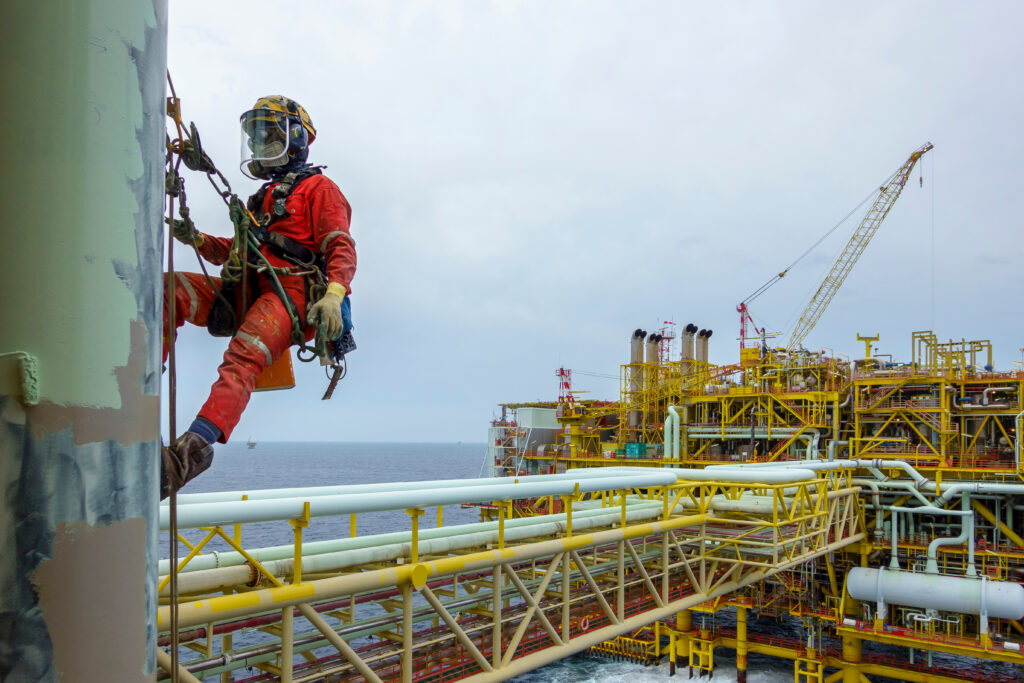Offshore oil drilling has long been a critical part of the energy industry, providing the world with essential resources. However, the work comes with enormous risks, as workers are often exposed to hazardous conditions, heavy machinery, and unpredictable environments. When safety measures fail or negligence occurs, the consequences can be catastrophic, not just for the workers themselves but for their families and the surrounding environment.
By reflecting on these historical tragedies, we gain important lessons about the need for stricter oversight, improved safety measures, and accountability in the offshore drilling industry. These hard-learned lessons are vital for preventing future accidents and ensuring that workers and their families are not left to suffer the devastating consequences of negligence.
If you or a loved one has been injured in an offshore oil rig accident, you need a dedicated personal injury lawyer who will fight to secure your rights and protect your family’s future. Contact The Karam Law Office today for a free case evaluation to start pursuing the compensation that you deserve.
Understanding the Dangers of Offshore Drilling
Working on offshore oil rigs is one of the most dangerous jobs in the world, requiring immense courage and dedication from workers who face perilous conditions daily. While they accept the inherent risks of the job, it is the legal and moral responsibility of employers to implement rigorous safety protocols and provide adequate training to minimize hazards. When these safeguards are neglected, and accidents occur, workers deserve more than acknowledgment of their sacrifices; they must be compensated fairly for their injuries, losses, and the life-altering consequences they endure. Ensuring justice for these brave individuals is not just about financial support; it is about honoring their commitment and holding negligent parties accountable.
Common Risks and Hazards on Oil Rigs
Accidents on oil rigs can stem from a variety of factors, many of which are preventable with proper safety protocols and training. These accidents often occur due to equipment failures, such as malfunctioning machinery or poorly maintained tools, which can lead to devastating injuries. Human error, often fueled by exhaustion from long shifts, is another significant contributor, as fatigue can impair judgment and reaction times. The complexity of oil rig operations requires workers to operate heavy machinery, manage volatile materials, and often work at great heights, all of which contribute to the dangerous nature of this job.
Workers on oil rigs are exposed to numerous risks on a daily basis, further compounding the likelihood of accidents. These risks include:
- Explosions and fires are due to the presence of flammable chemicals.
- Falls from heights, such as scaffolding or derricks.
- Equipment malfunctions, such as crane or drill line failures.
- Toxic exposure to hazardous materials and gases.
- Slips and falls are caused by slick, wet surfaces on the rig.
- Weather-related dangers, including severe storms and high seas.
- Fatigue and overexertion from long hours and demanding physical labor.
Each of these hazards underscores the need for stringent safety measures and employer responsibility to protect the lives of these hardworking individuals. Without proper precautions, these risks can lead to life-altering injuries or even loss of life, highlighting the gravity of ensuring safety on every oil rig.
Historical Offshore Oil Rig Disasters
The history of offshore oil rig disasters serves as a somber reminder of this industry's high stakes and the lives lost in pursuit of energy. Each major incident has fueled significant conversations about safety standards and best practices, pushing the industry to adopt advancements aimed at reducing risks. Yet, despite these improvements, systemic challenges like cost-cutting measures and inconsistent enforcement of regulations remain persistent hurdles that endanger workers.
The Ocean Ranger Catastrophe (1982)
The Ocean Ranger disaster of February 15, 1982, claimed the lives of all 84 crew members on board when the semi-submersible oil platform sank off the coast of Newfoundland during a severe storm. A combination of inadequate design, insufficient training, and poor emergency equipment contributed to the rig's inability to withstand the extreme weather conditions. This disaster exposed a dire need for better storm preparedness, rigorous inspection protocols, and advanced safety technology for offshore environments. Following the tragedy, regulations were updated to include improved hull designs, better survival suits for workers, and enhanced emergency training programs.
The Piper Alpha Tragedy (1988)
The Piper Alpha oil platform, situated in the North Sea, became the site of one of the deadliest offshore disasters in history. On July 6, 1988, a routine maintenance error led to a massive explosion, igniting a series of fires and causing the platform to collapse. Tragically, 167 workers lost their lives, and the event highlighted critical failures in communication, emergency response, and safety procedures. Despite these improvements, Piper Alpha also exposed ongoing challenges, such as the industry’s dependency on aging infrastructure and the risks of underinvestment in maintenance. While safety protocols have improved, this disaster serves as a constant reminder that cutting corners to save money can lead to catastrophic consequences.
The Deepwater Horizon Disaster (2010)
On April 20, 2010, the Deepwater Horizon oil rig, located in the Gulf of Mexico, suffered a catastrophic blowout during drilling operations, triggering an explosion that claimed 11 lives and released millions of barrels of oil into the ocean. The environmental fallout was unprecedented, devastating marine ecosystems, local industries, and communities reliant on fishing and tourism. This disaster brought global attention to gaps in safety oversight, engineering failures, and poor risk management.
The incident led to sweeping regulatory changes, including creating the Bureau of Safety and Environmental Enforcement (BSEE) and new requirements for well design and blowout preventers. However, challenges persist in ensuring these regulations are followed consistently across companies.
Reflecting on these disasters also underscores the importance of reacting after tragedy strikes and anticipating potential failures before they occur. The lessons learned highlight the need for a culture of safety that prioritizes human lives over profits. However, the offshore drilling sector continues to face challenges, such as adapting to new technologies without compromising safety and addressing labor fatigue in high-pressure environments. To truly honor the lives lost in these disasters, the industry must remain relentless in its pursuit of a safer future.
The Human Impact of Oil Rig Disasters
The personal impact on families is immeasurable, with spouses, children, and parents losing loved ones or facing the long-term care of an injured worker. These stories often reveal the unspoken cost of offshore oil drilling, from the emotional trauma of sudden loss to the immense pressure of navigating life after a tragedy. Workers and families deserve not only safety measures but also accountability and support in the aftermath of these disasters.
The fallout of an oil rig disaster extends beyond the initial tragic event, creating long-lasting financial and emotional burdens. Workers who sustain serious injuries often face piling medical expenses, rehabilitation costs, and the loss of income from their inability to return to work. Families frequently find themselves struggling to cover daily expenses while dealing with the sudden financial instability caused by a loved one’s injuries or death.
Emotionally, the toll is equally staggering. Survivors often struggle with post-traumatic stress disorder (PTSD) or depression, while families cope with the grief and uncertainty of their new realities. Spouses share stories of sleepless nights worrying about financial stability or witnessing their partner's emotional withdrawal due to trauma. The ripple effects of these disasters highlight the need for better safety protocols and robust legal and financial support for those affected.
Protecting Offshore Workers and Their Rights
Protecting offshore workers and their rights is a critical priority in an industry fraught with hazards. The Occupational Safety and Health Administration (OSHA) has established strict regulations to mitigate risks, ensuring employers uphold the highest safety standards. These rules cover everything from equipment maintenance to worker training, creating a foundation for safer offshore environments.
OSHA Regulations:
- Mandates for fall protection systems, including harnesses and guardrails.
- Comprehensive safety training programs for all crew members.
- Regular inspections and maintenance of heavy machinery.
- Emergency response drills and evacuation plans.
- Each platform must have adequate PPE (personal protective equipment) for all workers.
Modern Technologies:
- Use of AI-driven monitoring systems to detect equipment failures early.
- Advanced fire suppression systems are needed to contain blazes effectively.
- Real-time data feeds for environmental conditions, boosting decision-making during storms.
- Wearable tech for health tracking and location monitoring in emergencies.
Employers and regulators must collaborate to implement these tools and practices consistently, ensuring offshore workers are protected in every possible way. By prioritizing safety, the industry can prevent tragedies and support those taking on this challenging work.
Legal Support for Offshore Injury Victims
When you're working offshore to provide for your family, an injury on the job can turn your world upside down. If this happens, you first need to report the incident to your employer and get the medical care you need as soon as possible. Make sure to document everything. This includes taking photos, gathering statements from anyone who saw what happened, and keeping track of all medical records related to the injury.
Going up against big oil companies can feel intimidating. They have teams of lawyers, and the rules for offshore work are complex. Having someone in your corner who understands the law and knows how to fight for offshore workers makes all the difference.
The Karam Law Office is committed to helping injured workers and their families get the compensation they need to cover expenses like medical bills and lost wages. More importantly, holding employers accountable when they’ve been negligent can spark changes that protect others in the future. It’s not just about what you’re owed today, it’s about standing up for your rights and taking care of your family’s future. Contact us today to discuss your offshore injury claim.




